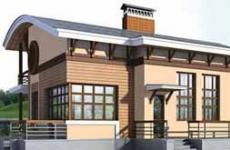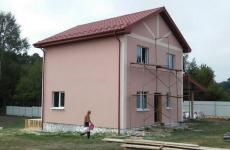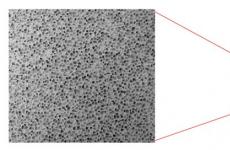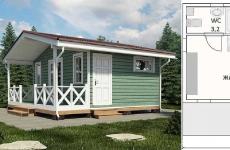What fire-fighting equipment should be equipped with an apartment. Types of fire shields. Where to place the shield.
ABC fire safety. Fire shields and their equipment.
For many of our citizens, the external manifestation of order in the field of fire safety is the presence at the facility (in an institution, at an enterprise) fire extinguishers. If they are installed in prominent places, brightly colored, then it seems that there are questions fire protection properly resolved. And vice versa, the absence of fire extinguishers or their unsightly appearance indicates that these issues are not paid attention to at this facility. But besides fire extinguishers, there are other fire extinguishing agents that should be available at the enterprise. So, for example, fire shields and non-mechanized manual fire tools located on them.
fire shields must be of such dimensions as to ensure the convenience and efficiency of removal (extraction) of the fire tool attached to them and compliance with the requirements for its placement. The complete set of fire shields and stands must comply with the categories (types) of objects for which they are intended, and the Fire Safety Rules for these objects.
painted fire shields can be both in red, which should be used to indicate various kinds fire fighting equipment and equipment, TSPPZ (fire pumps, tanks and cylinders with fire extinguishing compositions, assemblies, valves and other equipment requiring operational identification), and in White color, but at the same time, a red edging is applied around the perimeter of the shield, the width of which should be from 30 to 100 mm.
On the fire shields, boxes for sand and barrels for water, the serial numbers and telephone number of the nearest fire department should be indicated. The serial numbers of fire shields are indicated after the corresponding letter indices: “PSh”.
In accordance with the requirements of GOST, fire shields must be equipped with the following fire equipment: fire-fighting cloth, metal hook, scrap, buckets, fire ax, shovel.
The fire-fighting cloth is designed to stop the further spread of a fire, create conditions for its successful elimination by the available forces and means, as well as to extinguish burning clothes on the victim, to protect combustible structures and equipment during hot work. The cloth should be made of silica heat-insulating fabrics.
Besides fire shields panels are completed with premises and vehicles in accordance with the requirements of technical regulatory legal acts of the system of fire safety regulation and standardization in the Republic of Belarus.
The dimensions of the cloth [m] must correspond to the following parameters 1.0x1.0; 1.0x1.5; 1.5x1.5; 1.5x2; 2x2. Deviation in length and width is allowed no more than ± 0.02 m.
Handles should be sewn to the edge of the cloth. The number of handles (2 or 4) is determined by the consumer.
When using the cloth, proceed in the following order:
· open the container;
· to put on canvas mittens;
taking the cloth by the handles, open it;
cover the fire with a cloth from the windward side, and in the absence of wind from the side of a lower intensity of the flame;
After the elimination of the source of fire, remove the cloth, taking it by the handles. To avoid burns, hands should be protected with canvas gloves;
When extinguishing clothes on the victim, cover him with a cloth on all sides.
When using cloth fireproof size 2x2 m, the opening of the panel and the localization of the fire must be carried out by two people.
The following defects are not allowed on the cloth:
holes
rolled on a fabric length of more than 10 mm;
oil stains.
The fireproof cloth must be stored in a container for packing the cloth. The time of opening the container and full opening of the panel should not exceed 4 seconds. The container must have attachments for attaching to vertical surface and closures. It should be made of polymer, fabric or other material that ensures the safety of the panel. The dimensions of the fabric container should be selected from the range of 300x400 mm, 270x420 mm, 205x515 mm with a deviation in length and width of ± 10 mm. The dimensions of the container made of polymeric material are 120x400 mm with a deviation in length or width of ± 10 mm. It is allowed to manufacture containers of other sizes as agreed with the consumer.
Each container must be applied with indelible paint or in another way that ensures safety during the entire service life, the following information:
name and designation of the product;
the order of actuation and application of the panel using drawings.
When storing the cloth, it must be dried and dusted at least once a month.
When extinguishing fires, it becomes necessary to disassemble and open building structures, communication networks and elements technological installations. To perform these works, hooks and crowbars must be available on the fire shield.
Gaffs are used for dismantling roofs, partitions, walls, other structural elements of buildings and structures when extinguishing a fire, in addition, burning objects, materials, etc. are pulled away with gaffs.
The gaff is an all-metal rod with a hook welded on one end and a ring handle on the other. The gaff must have a length of 2000mm and a weight of at least 5kg.
Scrap is used to clear the place of fire, open the roof, lathing, as well as beat off ice from hydrant wells and open their hatches. The diameter of the scrap should be 25mm, length 1100mm, weighing at least 4.5kg.
Hooks and crowbars are checked by external inspection, while paying attention to the fact that the surface of the tool is smooth, without cracks, burrs, deep shells, scale.
As necessary, the straight ends of the scrap are sharpened, after which it must be subjected to heat treatment to a depth of 150 mm, and the straight end of the gaff - 60 mm.
The buckets are designed to deliver water and sand to the place of fire. The capacity of cone-type fire buckets must be at least 0.008 m 3, and the completion of fire shields with utility buckets does not contradict. Buckets are painted red.
The pointed digging shovel (bayonet) is designed for digging the soil and throwing the fire source with sand or other loose fireproof materials. The shovel handle should have dimensions from 1100 to 1300 mm, a diameter of 40 mm and be painted red.
The fire ax is designed for opening structures, clearing the passage from serious obstacles. A fire ax is an ax that has a pointed end instead of a butt, it can be not only all-metal (an ax and an ax handle), but also be mounted on a wooden ax handle. The handle of an all-metal ax must be protected by a rubber coating.
The metal parts of the axes must be securely mounted on the ax handles. The strength of the nozzle must be established in the standards and specifications for specific types of instruments. Wooden ax handles must be made of durable wood, not have signs of damage, knots, cracks and chips, painted red
In addition to the non-mechanized tool located on the fire shield, a water tank, a box with sand and fire extinguishers, which must be painted red, should be located near each shield.
Barrels for storing water for fire fighting must have a capacity of at least 0.2 m 3, at least once every 10 days the water in the barrels must be replenished, and once a quarter it must be completely changed.
Sand boxes should have a capacity of 0.5; 1.0 and 3.0 m 3 and be equipped with a shovel. Sand tanks included in the design of the fire shield must have a capacity of at least 0.5 m 3. Before filling the box, the sand should be sieved and dried, once every 10 days the sand should be inspected and dried when wet and clumping. The design of the box (tank) should ensure the convenience of extracting sand and exclude the ingress of precipitation.
Fire extinguishers placed on the board outdoors or in unheated rooms and not intended for operation at low temperatures are subject to removal for the cold period. In such cases, information on the location of the nearest heated room where fire extinguishers are stored during the specified period should be placed on fire boards.
Manual non-mechanized fire tools and equipment located on the fire shield must be kept in good condition, they are not allowed to be used for other than their intended purpose.
Norms buildings, structures, premises of objects with fire shields and their equipment.
|
Object name |
The number of fire shields and their equipment |
||
|
1. AND polling stations |
On the territory of rural settlements, in case of lack of water and lack of water supply, in the summer period near the building of the polling station it is necessary to install two barrels with water with a capacity of at least 0.2 m 3 each, a box with sand with a volume of at least 0.5 m 3 and a fire station with the following (approximate) fire equipment: fire extinguishers - 2; buckets - at the rate of two buckets per barrel; fire protection cloth 2´ 2 m - 1; fire ax - 2; metal hook - 2; scrap - 2, shovels-2. |
||
|
2. Buildings of fairs, markets and sales exhibitions, as well as in open areas. |
On the territory of the facility, for every 5000 m 2 of area, fire shields with the following fire extinguishing equipment should be installed: carbon dioxide or powder fire extinguishers - 2; sand box - 1; fireproof cloth - 1; crowbars - 2; axes - 2; shovels - 2; buckets - 2. |
||
|
3. Industrial buildings, structures, installations of light industry enterprises: |
Calculation rate |
Fire shield |
The set of primary fire extinguishing equipment for a fire shield should include: Hook - 1 pc.; Scrap - 1 pc.; Shovel - 1 pc.; Bucket - 2 pcs.; Fire-fighting cloth - 1 pc.; Sand box - 1 m 3 |
|
400 m2 |
1 |
||
|
500 m2 |
1 |
||
|
700 m2 |
1 |
||
|
700m 2 |
1 |
||
|
Power plants and substations |
200 m2 |
1 |
|
|
Administrative premises |
500 m2 |
1 |
|
|
Open warehouses and bases |
1 |
||
|
Garages |
100 m2 |
1 |
|
|
3. Enterprises and organizations, as well as citizens operating business entities of logging, woodworking, pulp and paper and wood chemical industries |
Calculation rate |
Fire shield |
The fire shield must comply with the requirements of GOST 12.4.009 and includes: gaff - 1 pc.; scrap - 1 piece; shovel - 1 piece; bucket - 2 pcs.; fire-prevention cloth - 1 pc.; sand box - 1m 3. Mounting for 2 fire extinguishers should be provided on the fire shield. Each warehouse must have at least one fire shield. |
|
Transformer substations |
200 m2 |
1 |
|
|
Closed warehouses and warehouses: |
|||
|
Chemicals and reagents |
200 m2 |
1 |
|
|
Alkali and alkaline earth metals |
200 m2 |
1 |
|
|
Sites and shops of match production |
100 m2 |
1 |
|
|
Timber dryers |
100 m2 |
1 |
|
|
4. Chemical, petrochemical and oil refining industries |
On the territory of the facility, for every 5000 m 2 of the building area of the territory (but not less than one), fire shields with a set of: powder fire extinguishers - 2; sand boxes - 4 (1 m 3); axes - 2; shovels - 3; metal gaffs - 3; buckets painted red -2; water container with a volume of at least 0.2 m 3 (at positive temperature environment) – 2. |
||
|
5. During the construction (reconstruction, expansion, technical re-equipment and repair) of buildings, structures and other urban planning objects; construction and operation of temporary buildings and structures at construction sites |
In industrial and warehouse buildings and structures, as well as on the territory construction site in the places determined by the construction general plan and near the places of the most probable occurrence of a fire, fire shields with the following minimum set of hand fire tools and fire extinguishers should be placed: axes - 2; crowbars and shovels - 2; bagrov iron - 2; buckets painted red - 2; fire extinguishers - 2; fire protection cloth size 1.5´ 1.5 or 2´ 2 m - 1; a box with sand with a volume of at least 0.5 m 3 - 1; a container with water with a volume of at least 0.2 m 3 (at a positive ambient temperature) - 1. At the same time, the number of fire shields on the territory of the construction site must be at least two, and their placement must be dispersed. |
||
|
6. Warehouses, tank farms, their branches, facilities of enterprises and organizations engaged in the storage, transportation and distribution of petroleum products |
On the territory of the facility, for every 5000 m 2 of the building area of the territory (but not less than one), special shields with a set of: carbon dioxide or powder fire extinguishers - 2 should be installed; boxes with sand - 1 (1m 3); fire-fighting cloth - 1; crowbars - 2; axes - 2; shovels - 2; buckets painted red -2. |
||
|
7. cultural institutions |
In industrial and warehouse buildings and structures, as well as on the territory of institutions, fire shields with the following minimum set of hand fire tools and fire extinguishers should be placed: axes - 2; crowbars and shovels - 2; metal gaffs - 2; buckets painted red - 2; fire extinguishers - 2; fireproof cloth - 1; sand box - 1; container with water (at positive ambient temperature) - 1. The installation sites of fire shields on the territory of institutions should be located near the places of the most likely occurrence of a fire. At the same time, the number of fire shields on the territory of institutions should be at least two, and their placement should be dispersed. |
||
|
8. For residential buildings, hostels, individual garages and gardening associations. |
For placement of primary fire extinguishing equipment at the entrances to the territory of horticultural associations, construction and operation cooperatives open parking and garages, special shields with a set of fire equipment (inventory) should be installed, pcs.: axes - 2; crowbars and shovels - 2;metal gaffs - 2; buckets painted red - 2; carbon dioxide or powder fire extinguishers - 2; fireproof clothwith sizes not less than 2´ 1.5 m - 1; sand box volume not less than 0.5 m 3 (1 m 3) - 1. |
||
|
9. Printing production and publishing. |
To place primary fire extinguishing equipment on the territory of the enterprise, for every 5000 m 2 of the building area of the territory (but not less than one), fire shields with a set of: carbon dioxide, powder or air-foam fire extinguishers - 2; sand boxes - 1; fire-fighting cloth - 1; crowbars - 2; axes - 2; shovels - 2; buckets painted red -2. |
||
|
10. Trade organizations, public catering, bases and warehouses |
On the territory of the facility, for every 5000 m 2 of building area (but not less than one), fire shields with the following fire extinguishing agents should be installed: carbon dioxide or powder fire extinguishers– 2; sand box - 1; fireproof cloth - 1; crowbars - 2; axes - 2; shovels - 2; buckets - 2. |
||
|
11. Organizations engaged in construction, reconstruction, repair and maintenance highways |
|||
|
12. For enterprises and organizations in charge of main oil pipelines |
For every 5,000 m2 of built-up area (but not less than one) special boards with a set of: carbon dioxide or powder fire extinguishers - 2 should be installed; sand boxes - 1 (1 m 3); fire-fighting cloth - 1; crowbars - 2; axes - 2; shovels - 2; buckets painted red -2; a container with water with a volume of at least 0.2 m 3 (at a positive ambient temperature) - 1. |
||
|
13. Buildings and constructions religious communities |
In case of a lack of water or lack of water supply, in the summer, two barrels with water with a capacity of at least 0.2 m 3 each, a box with sand with a volume of at least 0.5 m 3 and a fire shield with the following fire equipment (exemplary list) must be installed near the religious building : fire extinguishers - 2; buckets - at the rate of two buckets per barrel; fire protection cloth 2´ |
||
|
14. Buildings and structures specially built and adapted, as well as open areas of venues for international, republican and regional exhibitions |
For every 1000 m2 construction area of buildings and structures not equipped with internal fire water supply and automatic fire extinguishing installations and exhibition areas that do not have an external fire water pipeline, or when removing buildings (structures) at a distance of more than 100 m from external fire water sources, fire shields should be equipped with a set of the following primary fire extinguishing equipment, non-mechanized tools and equipment, pieces: carbon dioxide or powder fire extinguishers - 2, a container with water (at positive temperature ) not less than 0.2 m 3 each - 2; sand box - 1; fireproof cloth - 1; crowbars - 2; axes - 2; shovels - 2; buckets - 2. |
||
|
15. Social service organizations |
In case of lack of water or lack of water supply, in the summer period, on 1000 m 2 of the building area, it is necessary to install two containers with water at least 0.2 m 3 each, one box with sand with a volume of at least 0.5 m 3 and a fire shield with the following fire equipment ( approximate list): fire extinguishers - 2; buckets - at the rate of two buckets per barrel; fireproof cloth 2´ 2 m - 1; fire ax - 2; metal hook - 2; scrap - 2; shovel - 2. |
||
|
16. Health organizations |
On 1000 m 2 of the building area, it is necessary to install 2 containers with water at least 0.2 m 3 each, one box with sand with a volume of at least 0.5 m 3 and a fire shield with the following fire equipment (approximate list): fire extinguishers - 2; buckets - at the rate of two buckets per barrel; fireproof cloth 2´ 2 m - 1; fire ax - 2; metal hook - 2; scrap - 2; shovel - 2. |
||
To fire shields (regardless of their execution), designed to eliminate many emergencies We have been accustomed since childhood. Without them, any institutions, industrial or other premises, territories are inconceivable. In the absence of such an attribute, the fire supervision simply will not allow the operation of any object.
But is a fire shield needed for a private house? Or is it a waste of money, nothing more than a "whim" of individual owners? Let's try to figure out why a shield is needed in the courtyard and how it can help if the house, in principle, has everything you need to put out a fire?
Availability of a fire extinguisher
Does every private house have this fire extinguisher? A small car doesn't count. But on the PS it must be mandatory, and not even 1, but 2. Often this is quite enough to eliminate the source of ignition “in the bud”.
Concentration of everything you need in one place
Of course, that such "accessories" as crowbars, buckets, shovels are in any farmstead. But during a fire, will all this be at hand at the very moment when every second is literally precious? The big question is if not a single person lives in the house, but a large family. During a fire, there is no time to find out "who took it, I put it here yesterday." The fire will not wait.
In addition, you do not have to look for sand or refractory fabric, which are equipped with PSH. Often they help to localize the place of ignition.
Separately, it is worth stopping at the buckets. How many wondered why they are cone-shaped on the PS?
- Such a bucket can be quickly filled with water from a barrel, as it sinks into it much easier.
- If the fire is extinguished by several people located “in a chain”, then it is much more convenient to transfer the cone bucket to each other.
- It is much easier to work with a container of this form if protective gloves are on your hands.
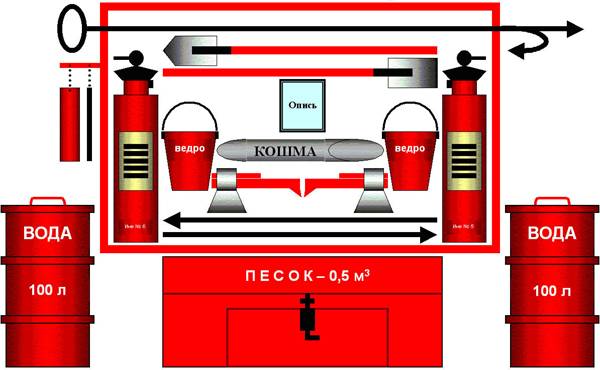
Lack of water is not a hindrance
It is essential to put out a fire. And if, according to a well-known law, it is in this moment did the water utility turn off the water supply due to repair, prevention, or an accident? PShch allows you to organize the fight against fire even without it, with improvised means.
Psychological aspect
Most people are only theoretically prepared for action in extreme situations. Practice shows that few people are able to keep their cool and think sensibly in a real danger. Many people are simply lost, not knowing what to do. If the house has a fire shield, then, saying plain language, even if “the head doesn’t figure it out”, the legs themselves will “run” in the right direction, the subconscious will work towards the shield. And this is already half the battle.
The procedure for completing the PS and the list of everything necessary are determined by the Rules fire regime(PPR) of 2012. The availability of appropriate accessories depends on its type. This is described in detail in Appendix No. 6 to the document.

It should be noted right away that the absence (or presence) of an ax is not a violation, since it is this issue that causes a lot of controversy when self-assembling or in the process of acquiring a finished shield. But still, it is desirable to have it on the shield. For example, if necessary, knock out the jamb of the door, window frame and so on it will be very useful. In some situations, a crowbar or gaff is unlikely to help.
For those who want to understand this issue in more depth, here is a list normative documents, which fully or partially reflect the requirements for the configuration and placement of the PS, as well as necessary tools and accessories:
- PPR-2012 - p.p. 483 - 485, adj. No. 6;
- GOST No. 12.4.009 of 1983 - p.p. 2.5.7. - 2.5.10;
- GOST No. 12.4.026 of 2001 - table 1, p.p. 5.1 and 5.2.
In these documents, you can find the requirements for color designation. constituent parts shield, and to the order of their numbering.

Conclusion
- The answer to the question of whether it is necessary to install a fire shield in a private house can be only one - YES. If only because in a fire you can lose EVERYTHING. So it makes sense to spend a little. By the way, experts pay attention to the statistics, according to which fires in individual buildings occur an order of magnitude more often than in apartment buildings.
- The configuration depends on the features of the structure - size, type of materials used in construction and decoration (flammability class) and a number of other factors. Therefore, the advice of a specialist will not be superfluous. But at least - a couple of buckets, a crowbar, a hook, a fire extinguisher, an asbestos sheet and a box of sand.
In principle, the PS can be made independently. For example, for a product open type All you need is a frame and trim. Even scrap can be made from thick. Everything else is for sale. But given the prices of components, it makes no sense to engage in "handicraft".
The shield itself (open) will cost about 645 rubles (wooden) and 710 rubles (metal). If it is equipped (at a minimum), then the cost, respectively, is from 940 and 1,200 rubles (it can reach up to 6,800 rubles). The price largely depends on the execution (the presence of a protective net, the capacity of the sandbox, etc.).
You can not discount the various regulations which are accepted for regional level. Therefore, it is advisable to seek detailed advice from the local department of the Ministry of Emergency Situations. At the very least, this will eliminate the waste of money (and time) on something “extra”, since it is unlikely that a non-specialist will be able to understand all the intricacies of even such a seemingly simple issue as a complete set of a fire shield.
You should not particularly count on the Seller's awareness in this matter, since his main goal is to sell. And the professionalism of many of them causes quite justified doubts.
The fire shield is designed to accommodate primary fire extinguishing equipment, mechanized tools and fire equipment in production and warehouses not equipped with fire-fighting plumbing and automatic settings fire extinguishing, as well as on the territory of enterprises that do not have an external fire water supply or when removing buildings (structures), external technological installations at a distance of more than 100 m from external fire water sources.
Types and equipment of fire shields.
Shield fire ShchP-A class A
Equipment:
- gaff
- Shovel shovel
- bayonet shovel
- Two conical buckets
- Two powder fire extinguishers
Shield fire ShchP-V class B 
Equipment:
- Fire cloth
- Shovel shovel
- bayonet shovel
- Conical bucket
- Three powder fire extinguishers
Shield fire ShchP-E class E 
Equipment:
- Hook with wooden handle
- Shovel shovel
- Dielectric scissors
- Dielectric gloves
- Dielectric bots
- One powder fire extinguisher
- Two carbon dioxide fire extinguishers
Shield fire SCPP 
Complete set of a mobile fire shield:
- gaff
- bayonet shovel
- fire canvas
- Conical bucket
- Two powder fire extinguishers
- Fire hose with barrel
Standards for equipping buildings (structures) and territories with fire shields.
| p/n | Name functional purpose premises and category of premises or outdoor technological installations in terms of explosion and fire hazard | Maximum protected area by one fire shield, sq.m. | Fire class | Shield type |
| 1 | A, B and C (combustible gases and liquids) | 200 | A, B, (E) | |
| 2 | B (solid combustible substances and materials) | 400 | A, E | |
| 3 | D and D | 1800 | A, B, E | |
| 4 | Premises for various purposes when carrying out welding or other hot work | - | A | SHPP |
sand boxSand boxes should have a volume of 0.5; 1.0 or 3.0 cubic meters and be completed with a shovel. The design of the box should ensure the convenience of extracting sand and exclude the ingress of precipitation. Sand boxes, as a rule, should be installed with shields indoors or in open areas where spillage of flammable combustible liquids is possible. |
 |
Barrel for waterBarrels for storing water, installed next to the fire shield, must have a volume of at least 0.2 cubic meters. and complete with buckets. Barrels must be protected from precipitation. |
|
Fireproof clothThe fire-fighting sheet is designed to extinguish fires of substances and materials on an area of not more than 50% of the area of the sheet used, the combustion of which cannot occur without air access. In places of application and storage of flammable liquids and combustible liquids, the dimensions of the sheets can be increased to 2x1.5m or 2x2m. The canvas should be stored in a waterproof, resealable case that allows quick application of this remedy in case of fire. |
 |
One of the necessary attributes of any public building- fire shield. Since from fire fighting measures depends on the safety of people, and the likelihood of fire in public place much higher. Shields are delivered to the market already fully equipped, but you can assemble this design with your own hands.
The main thing at the same time is to strictly observe all the requirements: due to an incorrectly installed and equipped shield, you can pay a fine. But this is far from the biggest problem. It is much worse if the structure turns out to be non-functional in emergency.
GOST
The section GOST PPR-2012 (Appendix 6), as well as 12.4.026 and Model Rules fire safety. It says the following:
1. The complete set of a fire shield depends on its type. The requirements for different shields are described in detail in various sections of the appendix.

2. All fire equipment- shields, stands, water barrels, sand boxes, tools, equipment - marked in red.
3. Fire shield edging - from 3 to 10 centimeters wide. The tool placement field is contrastingly white. The edging can be made with alternating slanted white and red stripes, the angle of inclination is from 45 to 60 degrees.

4. The shield must contain the contact details of the nearby fire department. The inscription "fire shield" is not required.
5. The dimensions of the fire shield are up to one and a half meters in height and width. Depending on the required kit, the size should be such that all the equipment placed can be activated instantly in an emergency.

6. The tool is placed on the hooks. Screwing and nailing is prohibited.
7. Fire shield according to GOST is placed in an easily accessible place.
Where are shields installed?
- warehouse and industrial premises, in which there is no automatic equipment for fire fighting or internal fire water supply;
- buildings where there is no external fire-fighting water supply, or more than one hundred meters away from it.
Types of shields
The main division is open and closed. Metal shields are usually closed.
An open fire shield is a flat sheet of metal or waterproof plywood. Hooks for the tool are fixed on the sheet. The design can be fixed on the wall or placed next to it on racks.
It is used most often in closed enterprises or territories: the safety of inventory is ensured by the fact that the room is closed, and the absence of additional barriers allows you to remove the tool as quickly as possible.
A closed fire shield is a metal cabinet, the doors of which are made of metal mesh. Inside, the same hooks, and the structure itself can also be mounted on the wall or placed side by side.
Doors are sealed or locked with a simple padlock. Such a shield can be installed outdoors, including in public places.
Attention: the equipment must be protected from direct sun and precipitation. Therefore, in street conditions it is permissible to place only closed structures. An exception is an open shield in a closed area, located under a canopy.
There are shields and stands. Functionally, these are the same designs, but the stand is equipped with without fail sand box.
Classification and equipment
1. ShchP-A is designed for class A fire (this includes the ignition of solid materials):

- two fire extinguishers with foam;
- barrel under water 0.2 cubic meters;
- two buckets;
- two shovels, shovel and bayonet;
- gaff and crowbar.
2. ShchP-V - ignition of liquids:

- two fire extinguishers with foam;
- one powder fire extinguisher;
- sand box;
- two shovels;
- bucket;
- fire-fighting cloth;
3. ShchP-E - burning of electrical equipment:

- carbon dioxide fire extinguishers, two pieces;
- powder - one OP-10. Instead, the kit may include powder OP-5 - two pieces and freon OX-2 - two pieces;
- fire-fighting cloth;
- shovel (scoop);
- sand box;
- dielectric scissors;
- hook with a wooden shaft;
- a set of rubber shoes and gloves;
- rubber mat.
4. ShchP-SH - fires at agricultural enterprises:

- foam-air fire extinguishers, 2 pieces;
- powder - one OP-10 or two OP-5;
- two shovels;
- two buckets;
- fire-fighting cloth;
- a barrel of water 0.2 cubic meters;
- pitchfork;
- gaff and crowbar.
5. ShPP - mobile shields:

- air-foam or powder fire extinguishers, two pieces;
- asbestos cloth;
- bayonet shovel;
- bucket;
- protective screen with racks;
- hand pump;
- five-meter sleeve for the pump;
- water tank 0.2 cubic meters;
- transport trolley.
It is now known which fire shield to install and where, but for fire safety purposes it is better to always install it and have more fire extinguishers.
- Primary fire fighting equipment ( primary funds firefighting)- these are devices, tools and materials designed to localize or extinguish a fire at the initial stage of its development (fire extinguishers, sand, felt, felt mat, asbestos cloth, bucket, shovels, etc.). These funds should always be ready, as they say, at hand.
It would be more correct to call these means means fire extinguishing, because extinguishing a fire with their help is impossible and even life-threatening. - To extinguish fires of various classes, powder fire extinguishers must have appropriate charges; for class A - ABC(E) powder; classes B and (E) - BC(E) or ABC(E).
- It is forbidden to use powder and carbon dioxide fire extinguishers to extinguish electrical equipment that is energized above 1 and 10 kV, respectively.
- Carbon dioxide fire extinguishers with a diffuser that creates a jet of OTV in the form of snow flakes, as a rule, are used to extinguish class A fires.
Carbon dioxide fire extinguishers with a diffuser that creates a gas jet of exhaust gases should be used to extinguish class E fires. - Freon fire extinguishers should be used in cases where effective fire extinguishing requires fire extinguishing compositions that do not damage the protected equipment and objects (computer centers, radio-electronic equipment, museum exhibits, archives, etc.).
- Air-foam fire extinguishers are used to extinguish class A fires (usually with a barrel of low expansion foam) and class B fires.
Air-foam fire extinguishers should not be used to extinguish equipment under electrical voltage, to extinguish highly heated or molten substances, as well as substances that enter into water with water. chemical reaction, which is accompanied by intense heat release and fuel spraying. - Chemical foam fire extinguishers and fire extinguishers activated by overturning them must not be put into service. They should be excluded from fire safety instructions and recommendations and replaced with more efficient fire extinguishers, the type of which is determined depending on the possible class of fire and taking into account the characteristics of the object being protected.
- It is forbidden to use water fire extinguishers to extinguish equipment under electrical voltage, highly heated or molten substances, as well as substances that enter into a chemical reaction with water, which is accompanied by intense heat release and splashing of fuel.
- In the event of a fire, call immediately fire department. This must be done even if the fire is eliminated on its own. Fire can go unnoticed in hidden places (in voids wooden floors and partitions, attic etc.) and the fire may subsequently re-ignite. This is possible even after a few hours.
- Do not attempt to extinguish the fire if it begins to spread to furniture and other objects, or if the room begins to fill with smoke. It is advisable to extinguish a fire on your own only at its early stage, when a fire is detected, and in case of confidence in own forces. If the fire could not be dealt with within the first few minutes, then further struggle is not only useless, but also deadly.
- Water is the most widely used fire extinguisher. Fire extinguishing properties it consists mainly in the ability to cool a burning object, to reduce the temperature of the flame. Being fed to the combustion center from above, the unevaporated part of the water wets and cools the surface of the burning object and, flowing down, makes it difficult for the remaining parts not covered by fire to ignite.
- Everyone can pour water from a bucket, but it is correct to use it to extinguish a fire, perhaps only after some training. Not every container is suitable for quickly pouring water to the required distance. Buckets are most effective in this case. If you take a bucket by the handle and, swinging, pour water forward, then in a rare case you can water the place that you need. Most often, in this case, the water will pour out all at once along a certain arc described by the bucket when swinging. Only part of the water from the bucket will fall on the fire, and most of it will spill to the side. In order to use water from a bucket economically and only with the benefit of extinguishing a fire, it is necessary to pour it in parts directed by strong jets. The best way to do this is to fill the bucket with water to two-thirds of its capacity, then right hand grab the near edge of the bottom of the bucket, and with the left grab the near part of its side. Leaning the body back a little, make a quick energetic movement forward. At the same time, stretching out both hands, direct the water poured from the bucket to the lowest point in front of you. In the absence of a bucket, water can be poured out of a saucepan, basin, can, etc. by the same methods.

- In extreme cases, instead of a shovel or scoop, you can use a piece of sheet steel, plywood, a baking sheet, a frying pan, a ladle to carry sand.
- It is prohibited to extinguish burning gasoline, kerosene, oils and other flammable and combustible liquids with water in a residential building, garage or pantry. These liquids, being lighter than water, float to its surface and continue to burn, increasing the burning area as the water spreads. Therefore, to extinguish them, in addition to fire extinguishers, you should use sand, earth, soda, and also use dense fabrics, wool blankets, coats soaked in water. Do not use synthetic fabrics that easily melt and decompose under the influence of fire, releasing not only toxic, but also flammable gases.
- Used to extinguish spilled flammable liquid foam fire extinguisher, it is necessary to direct the jet to the burning surface in such a way that the foam, without penetrating into the liquid, smoothly spreads over the surface of the burning liquid and covers it all. If the jet of foam coming out of the fire extinguisher under pressure falls into the burning liquid, then the latter can be sprayed onto the surrounding combustible objects and ignite them.
- When extinguishing a burning surface of a liquid spilled on the floor, one must not forget to also extinguish burning or smoldering surrounding objects. Even a small ember or spark left in a place inaccessible to observation can ignite the vapors of the burning liquid, and the fire will resume with the same force.
- Having discovered that the electrical networks caught fire, it is necessary first of all to de-energize the electrical wiring in the apartment, and then turn off the general switch on the input panel.
- Turning off the current, you should begin to extinguish the fire, using a fire extinguisher, water, sand.
- Until the moment when the electric current is turned off, the burning wire insulation can be extinguished with dry sand, throwing it with a shovel or shovel. At the same time, the flame will be knocked down, covering combustible objects located near the wires. Extinguishing burning insulation electrical network in the apartment, you need to find out if it burns further behind the group shield, at the entrance to the house.

